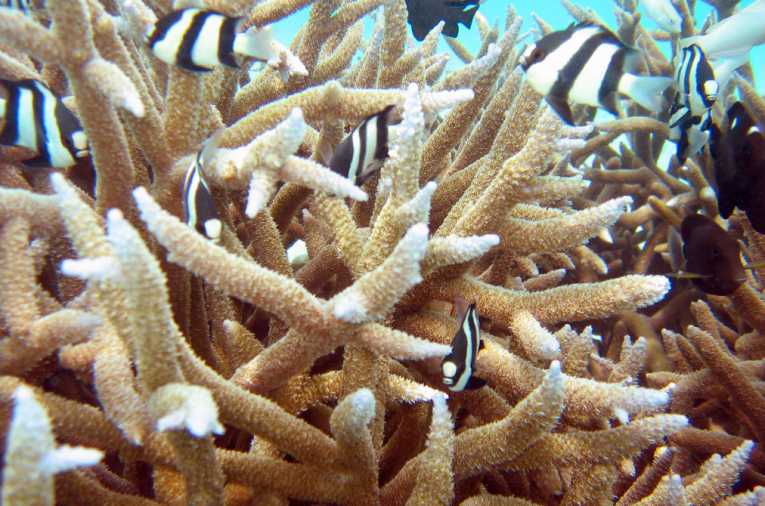Seven miles south west of the Deepwater Horizon wellhead a remotely controlled underwater vehicle called Jason discovered oil-fouled dead and damaged corals at 1400 metres deep.
One of 125 research cruises organised to understand what impact the massive 4 million barrel oil spill has had on Gulf of Mexico marine life, the Jason cruise was led by Professor Charles Fisher, a biology professor at Pennsylvania State University.
'We have been studying the deep water corals of the Gulf for over a decade and what we saw at one site near the Deepwater Horizon site was like nothing we had ever seen before,' said Fisher, a veteran of deep water exploration cruises in the Gulf since 1986. 'We discovered a community of coral that has been impacted fairly recently by something very toxic.'
Jason brought back images of fouled dying and recently dead deep-water coral species Madrepora and of the brittlestars (a kind of starfish) that associates with them. 'Many of the colonies appeared recently dead, with no living coral tissue, still covered with decaying material, and also with a notable lack of colonisation by other marine life, as would be expected on coral skeletons that had been dead for long periods of time," Fisher said.
In a month's time laboratory analysis is expected to confirm the presence of toxic oil or dispersant residues from the sediments and/or the coral tissues themselves. Fisher continued, "The proximity of the site to the disaster, the depth of the site, the clear evidence of recent impact, and the uniqueness of the observations all suggest that the impact we have found is linked to the exposure of this community to either oil, dispersant, extremely depleted oxygen, or some combination of these or other water-borne effects resulting from the spill," Fisher said.
Another voyage in a titanium-hulled submersible Alvin, also completed this month, by Samatha Joye of the University of Georgia found oil on the seafloor and brown stuff on the delicate coral sea fans. Many of these deep sea ecosystems have evolved in the presence of natural seeps of oil or gas, but it remains to be seen whether they can rebound from a spill of this magnitude.










